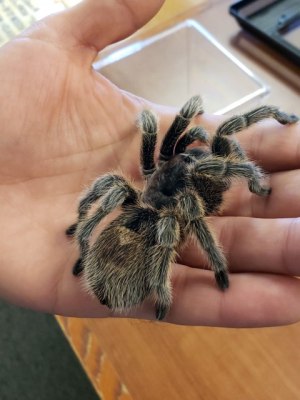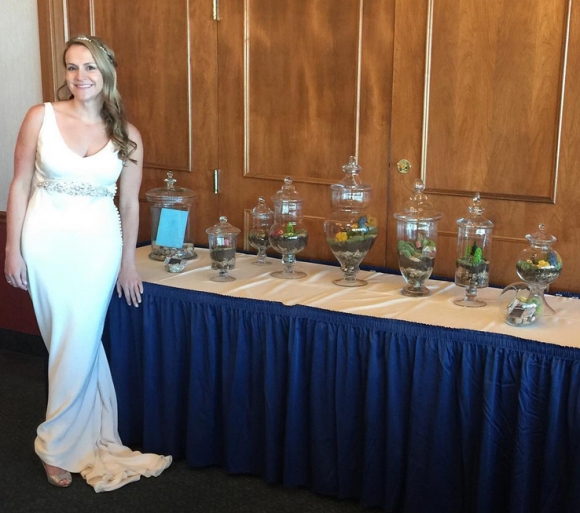There’s so much more to Penn State Behrend’s faculty and staff members than what you see them doing on campus. In this occasional series, we take a look at some of the interesting, unconventional, and inspiring things that members of our Behrend community do in their free time.
By Heather Cass
Publications Manager, Office of Strategic Communications, Penn State Behrend

What’s an Olympic-level runner to do when he is injured and can’t work out and the entire country is taking a pandemic pause? How does a guy who runs sub-4-minute-miles survive being stuck at home for months?
He flips.
A house.
Trading in his racing flats for a tool belt, Ricardo Estremera, 36, assistant teaching professor of Spanish, and his wife, Sherez Mohamed, a professor of Spanish and linguistics at Mercyhurst University in Erie, invested in a fixer-upper and got to work.
“We figured it would keep me busy,” said Estremera, who was training for a spot on the Puerto Rico Olympic steeplechase team when Achille’s tendon issues forced a layoff.
The couple had their work cut out for them. The house, while solidly built, needed an entire interior overhaul.

“The home was built in the 1890s, and I think cats have been peeing in it since 1891,” Mohamed wrote in a post on the Instagram page—The Professors Flip—that the couple started to document the progress of turning a $33,000 stinker into a sparkling, modern home on a tight budget.
Estremera approached the job with all the energy and enthusiasm he would have spent at the track, as did Mohamed who did her share of the remodeling, renovating, and restoration work, too. Estremera learned his handyman skills as a reluctant teenage helper to his father, repairing things around their home in Puerto Rico.
“When you’re a kid, parents make you do things and you hate it, but you end up learning a lot,” he said. “I didn’t like having to help fix things back then, but I love it now. Going to Home Depot is a good day for me.”
As soon as they closed on the house, they began a to-the-studs overhaul and transformed it into a modern home with an open concept. (See photos on Instagram. Click on the “Before and After” story.)
“The first house was an experiment to see if we could do it,” Estremera said. “We learned a lot. It’s amazing what you can figure out watching YouTube tutorials.”
Given the results, they decided to renovate another home – a duplex, which they are now renting out.
Being landlords wasn’t in the original plan for Estremera and Mohamed. It’s more of an altruistic endeavor than a business for them.
“We decided we wanted to provide beautiful, affordable housing for people in Erie,” he said. “The city has lots of old houses with charm that are not taken care of, and the landlords don’t seem to care. We do. We will take care of our properties and renters.”
Behrend Blog caught up with Estremera after he wrapped up a morning workout (yes, he’s back in training) to learn more about his life off campus.
What are the things you’re looking for when you’re investing in a new property?
We are very patient and look for deals in neighborhoods that are in the sweet spot. For example, houses in one area of Erie might be $130,000, but if you go a few blocks in any direction, you can find them for $60-$70,000. We are looking for residential areas where we can find a bargain, fix it up, and improve the community.
We also look at what the home needs, especially if there are any big-ticket improvements needed, such as a roof, electric, furnace, chimney or foundation repairs. These things are not deal-breakers, but we need to factor that in and make sure the renovation will pay off.
How many properties have worked on?
Our first was the home we live in. Then, we did the duplex, and we just bought another house.
So, you don’t actually “flip” them?
No. We learned that it’s actually very hard to make money flipping houses. The more time you spend doing it, the less cost effective it is.
Do you do all the home renovation work yourselves?
Most of it, yes. I enjoy the challenge, and it’s cost-effective to do the work yourself. Neither of us love painting, but it’s expensive to hire someone to do it, so we paint to save that money for other things, such as electrical work.
What have you learned the hard way?
Old houses are not square.
What are your top tips for anyone who might want to do what you do?
Do your research, shop around, and negotiate. I do a lot of research when we are looking for a new property, contractor or appliances/materials. I know how much things should cost. We shop around, even when looking for a bank loan, and we negotiate. My wife is an expert negotiator.
Switching gears, how is the running going? Are you injury-free now?
I am injury-free now, but I have found that it’s hard to stay in shape over winter in Erie due to the lack of indoor facilities. A treadmill is fine for a regular run, but not when you’re doing fast-paced training and I cannot run hurdles until at least April, so I’m months behind my competition. My plan is to train for longer distance (half marathon) in the fall and winter, then slowly shift to track season.
What are you training for now?
My end goal in the 2023 season is to wear my Puerto Rican jersey at the Central American and Caribbean Games (CAC Games) and Pan American Games. After the 2023 season, I will retire from track and field and compete in road races, like 5k, 10k, 21k and 42k.
Do you train with anyone?
I wish that I could. It’s hard to find partners who can run my pace. I do my hard workouts at a sub-4:00 to 4:30 (minutes per mile) pace. A recovery day is a 5:45 to 6:30 pace. I do volunteer with Behrend’s track-and-field team, though.
When did you start running?
I was about 15 or 16 years old when I started running seriously. Before that, I was a competitive swimmer. I hated it, though. I only did it because my brothers did, so we all went. When I started running, I knew that it would be my ticket to college. (Editor’s note: It was not only his ticket to college, but to a spot on the Puerto Rico Olympic team in the steeplechase. Read more about that here).
What do you enjoy about running?
It’s relaxing and it’s my time to think. I get a lot of work done while I’m running. I like to teach and then run because it gives me time to reflect on what went right, what went wrong, and what I might change.
Switching gears again…Why should students consider a Spanish minor?
A second language is an asset to any field or major and will make you stand out. In a global world, being bilingual is beneficial. It also gives you the full experience when traveling abroad. It will open the doors to another world!
You are a full-time faculty member, a husband, a member of the Puerto Rico Olympic team, a volunteer with the college’s track team, and a Ph.D. candidate who renovates homes in his spare time. What do you say to students who don’t turn in their assignments on time?
(Laughs). I say: Do you have a better excuse than I might to not get your work done? But seriously, I tell them they need a plan. Look at your calendar and fill it in with your No. 1 priorities and things that can’t move, such as classes. Then, find the gaps in your schedule to fit in other things—a workout, lunch, a date, meal prep, etc. Time management is key to success.

























